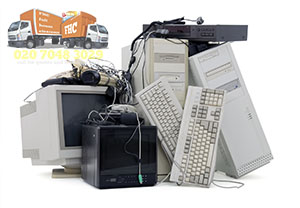Discarded electronics, redundant computers etc. are generally referred to as e-waste. E-waste is a relatively new occurrence as thirty or so years, there were hardly any computers and electronics found in households and offices. Since the mass production and introduction of electronics in everyday life and business, there has been the need for effective electronic waste removal and management.
Effective electronic waste removal and management boils down to recycling and reuse. Most examples of electronic equipment these days contain certain materials like precious metals, alloys etc. which are quite valuable and worth extracting and recycling.
But why is efficient electronic waste removal so important? Mainly because electronic waste contains toxic materials and substances, which cannot be disposed of in landfills and incinerators. Despite of this, between eighty and eighty five percent of all e-waste, ends up in landfills and incinerators which shows that electronic rubbish removal and management practices should improve. The toxic substances contained in e-waste mainly affect air quality through toxic emissions. Safe electronic waste removal and processing is essential when dealing with older generation equipment which is manufactured using a decent amount of lead – a toxic metal with detrimental effects on the whole human body.
In North America, e-waste represents only two percent of rubbish in landfills, at the same time though e-waste accounts for seventy percent of all toxic waste generated on the continent. On a world scale, each year people generate between twenty and fifty million metric tons of e-waste – this is a staggering amount of electronic waste which requires continuous rubbish removal and management. Currently, only twelve and a half percent of all e-waste worldwide is recycled.
On the same note, electronics like mobile phones and others such contain precious metals like gold and silver. Interestingly enough in the US alone, people dump mobile phones containing over sixty million dollars worth of gold and silver each year. Recycling one million mobile phones will yield over thirty five thousand pounds of copper, nearly eight hundred pounds of silver, seventy five pounds worth of gold and thirty three pounds worth of palladium.
 Laptops are another major violator when it comes to electronic waste removal and processing. If people recycled one million laptops, that would save the amount of electrical energy needed to power nearly four thousand average homes annually. In North America, statistics show that e-waste is the fastest growing type of rubbish generated by households in the last few years – electronic waste removal and processing practices are due to catch up soon.
Laptops are another major violator when it comes to electronic waste removal and processing. If people recycled one million laptops, that would save the amount of electrical energy needed to power nearly four thousand average homes annually. In North America, statistics show that e-waste is the fastest growing type of rubbish generated by households in the last few years – electronic waste removal and processing practices are due to catch up soon.
One of the real bummers with e-waste is that much of the ‘waste’ is not actually waste, but whole pieces of electronic equipment or working parts, which can be readily resold or reused directly. Sometimes outdated yet properly working electronics are simply tossed out – this is complete madness, when the manufacturing of a single computer eats up five hundred and forty pounds of fossil fuel, nearly fifty pounds of chemicals, and one and a half tons of water.
Some of the most toxic pieces of electronic equipment are: CRT monitors and TVs, LCD screens and TVs as well as plasma TVs.



